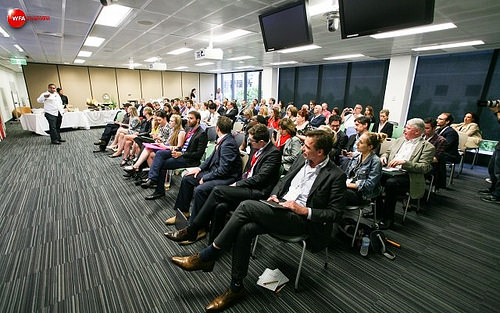WFA shares recommendations on how procurement teams can skill up
11/06/2013
Back to the overview
On June 10 at ProcureCon in London, WFA shared learnings from its global project to benchmark marketing sourcing maturity. The recommendations reflect the way marketing procurement is evolving within leading global advertisers, and seek to demonstrate how the discipline is evolving from a commercial support function into a strategic business partner for marketing.
• Organisational readiness and acceptance of change is crucial for marketing procurement (a comparatively new business role) to progress through to maturity. CMO level support is required. As is procurement capability to effect that organisational change.
• Drive coverage of marketing spend: decentralised procurement operations spread across local markets are increasingly common. One example is the rise of the China Indirect Procurement Organisation to service one of the major APAC markets.
• Apply strategic sourcing rigour: advocate global category leadership centrally with strong local implementation and control. Visibility of the spend across brands and geographies is the first step.
• Hire the right talent. Procurement people need marketing experience or enough time to learn it before they can speak marketing language. You can't buy what you don't know.
• Educate senior purchasing/supply chain/finance stakeholders that nickel and diming agencies doesn't always pay off in the long run. Marketing sourcing should advocate the marketing is an investment not a cost.
• Share the same business objectives. Procurement people are often seen as cost-cutters. Talk instead about profitability. Marketing is about growing brands and the business as a whole. Use their language to ensure projects aren't derailed by misperceptions of intent.
• Respect your surroundings. The challenges for procurement will be different each time. The business objectives of an organisation with 18% revenue growth yr. on yr. will be naturally different to others. Is the “low-hanging fruit” really worth going after if it labels procurement as too cost-conscious?
• Physical proximity to marketing stakeholders is useful for gaining initial traction, but not essential for long-term success. Evidence points to opposite trend of getting closer to supply base (agencies, vendors) rather than the internal client (marketing).
WFA Members can log in to download the full presentation below.
The recommendations follow a survey launched in 2012 amongst 63 global corporates, which was run in partnership with the marketing effectiveness consultancy SPIRE Worldwide. The project aims to benchmark global marketing procurement maturity and will continue in 2013: WFA members will receive invitations to participate during the course of July/August.
For more information on global marketing procurement please contact Steve Lightfoot [email protected]
Sign up to monthly WFA news
• Organisational readiness and acceptance of change is crucial for marketing procurement (a comparatively new business role) to progress through to maturity. CMO level support is required. As is procurement capability to effect that organisational change.
• Drive coverage of marketing spend: decentralised procurement operations spread across local markets are increasingly common. One example is the rise of the China Indirect Procurement Organisation to service one of the major APAC markets.
• Apply strategic sourcing rigour: advocate global category leadership centrally with strong local implementation and control. Visibility of the spend across brands and geographies is the first step.
• Hire the right talent. Procurement people need marketing experience or enough time to learn it before they can speak marketing language. You can't buy what you don't know.
• Educate senior purchasing/supply chain/finance stakeholders that nickel and diming agencies doesn't always pay off in the long run. Marketing sourcing should advocate the marketing is an investment not a cost.
• Share the same business objectives. Procurement people are often seen as cost-cutters. Talk instead about profitability. Marketing is about growing brands and the business as a whole. Use their language to ensure projects aren't derailed by misperceptions of intent.
• Respect your surroundings. The challenges for procurement will be different each time. The business objectives of an organisation with 18% revenue growth yr. on yr. will be naturally different to others. Is the “low-hanging fruit” really worth going after if it labels procurement as too cost-conscious?
• Physical proximity to marketing stakeholders is useful for gaining initial traction, but not essential for long-term success. Evidence points to opposite trend of getting closer to supply base (agencies, vendors) rather than the internal client (marketing).
WFA Members can log in to download the full presentation below.
The recommendations follow a survey launched in 2012 amongst 63 global corporates, which was run in partnership with the marketing effectiveness consultancy SPIRE Worldwide. The project aims to benchmark global marketing procurement maturity and will continue in 2013: WFA members will receive invitations to participate during the course of July/August.
For more information on global marketing procurement please contact Steve Lightfoot [email protected]
Sign up to monthly WFA news
















































































